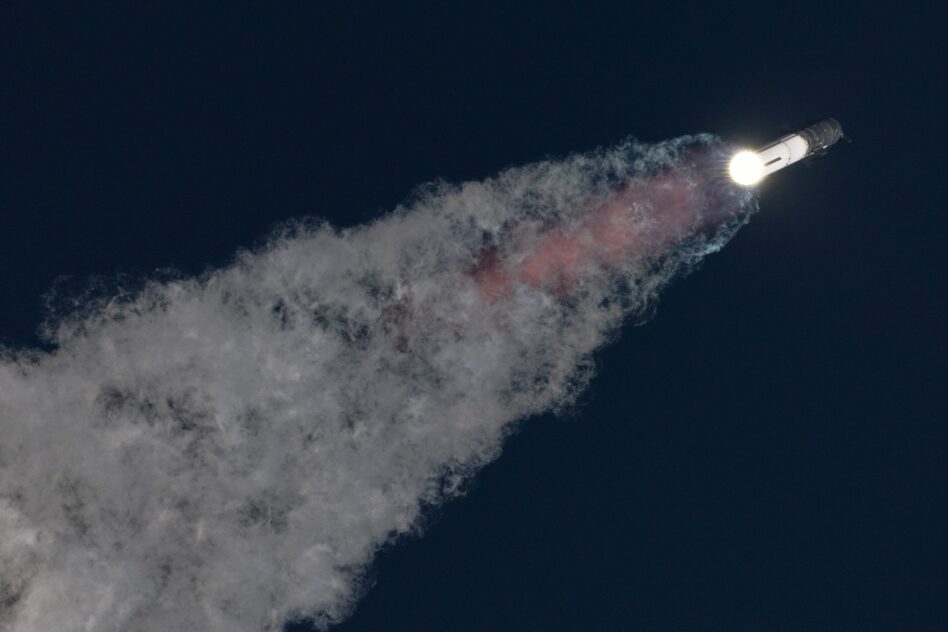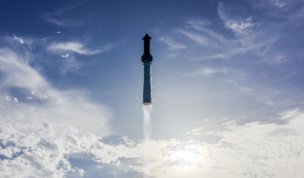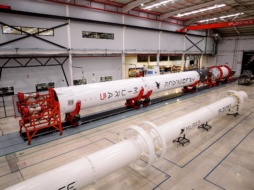Starship made it to space.
The rocket’s second flight test notched several successes for the company, marking a significant step forward in the road to getting the paradigm-shifting rocket ready for commercial operations. The test ultimately ended, though, when SpaceX lost touch with the rocket and it triggered its automated flight termination system.
How it all went down: SpaceX carried out the second Starship orbital flight test on Saturday morning from Starbase. Starship and the Super Heavy booster successfully lifted off from the pad just after 8am ET.
All 33 Raptor engines ignited and remained lit throughout the flight, unlike the first test where three engines failed shortly after liftoff, and at least six were out by the time the spacecraft exploded. While heading toward space, the system made it through Max Q, when the forces on the rocket are greatest.
Starship successfully separated from Super Heavy, but instead of returning to Earth for a water landing as planned, the booster exploded (or, in mission control terminology, experienced a “rapid unscheduled disassembly”).
Starship continued on its nominal trajectory for a few minutes with all of its engines lit. On the broadcast, SpaceX then reported that it had lost contact with the second stage at an altitude of 148 km. The automated flight termination system kicked in over the Gulf of Mexico.
What’s a success, anyway? The rocket’s second test flight can’t be considered a complete success, seeing as it didn’t complete all its mission objectives, including A) returning the booster for a splashdown and B) completing a suborbital trip around the world before a planned splashdown north of Hawai’i.
Still, the test notched a few successes since last time:
- The water deluge system kept the pad in mint condition—a vast improvement over the first flight test, which destroyed the pad and sent rock and sand particles flying for miles.
- The hot staging approach, which ignited the second stage’s engines before stage separation, worked well (though it may have contributed to the booster’s kaboom).
- Starship reached an altitude of 148 km, much farther than the last test, which exploded at 39 km.
Up next: The test did end in a failure, which means that SpaceX will have to submit another mishap report to the FAA and wait for the agency to issue another launch license before attempting another flight—a process that took seven months for the first test failure.
It’s an all-too-familiar process for those keeping a close eye on the Starship program, and SpaceX is feeling the time pressure to get the rocket operational. Starship is integral to deploying the next generation of Starlink, and NASA is relying on it as it plans to send astronauts to the Moon within the decade.
“Spaceflight is a bold adventure demanding a can-do spirit and daring innovation, NASA Administrator Bill Nelson said about the flight test in a post on X. “Today’s test is an opportunity to learn—then fly again.”
CLARIFICATION: SpaceX planned for the booster to return to Earth and splashdown in the ocean.




